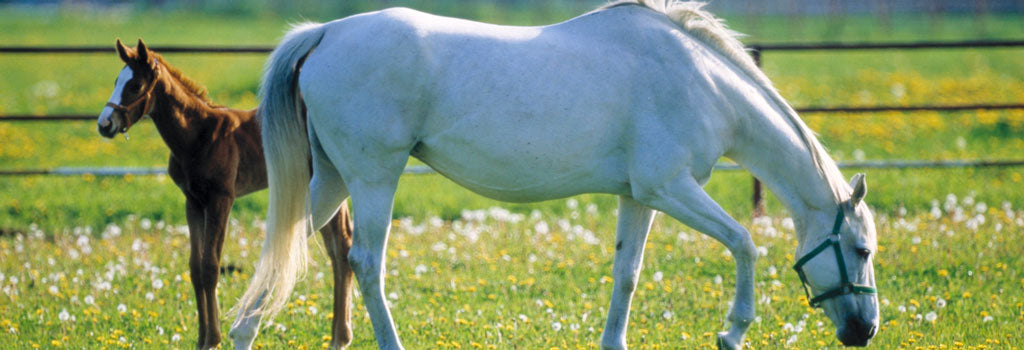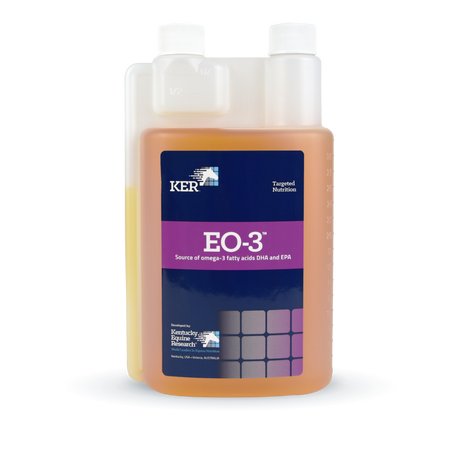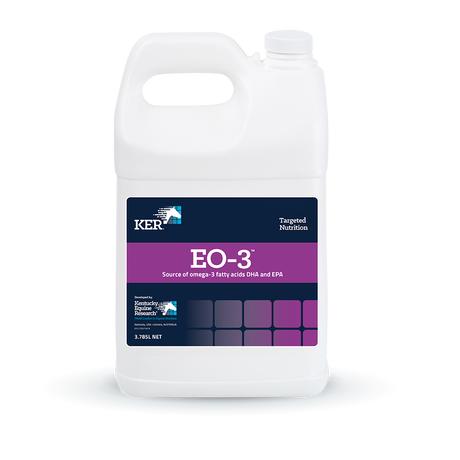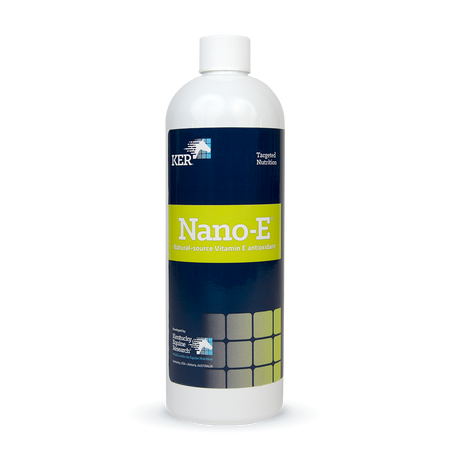
FERTILITY
FERTILITY
Fertility challenges may be the result of issues plaguing the stallion, the mare, or both.
Broodmare fertility may be negatively impacted by a range of factors, some of which are simple to correct while others pose greater challenges. Infertility in mares is typically categorized by whether or not the mare cycles normally and then by whether the mare conceives and fails to hold the pregnancy due to early embryonic death (EED) or consistently fails to conceive.
When assessing a mare for potential challenges to fertility, look to seasonal changes, steroid use, body condition, nutrient intake, metabolic disease, ovarian and uterine physiology and pathology, foaling history, and age as contributors to infertility.
Failure to cycle normally. In mares that fail to cycle, seasonal changes to their fertility may still be at work as typically mares enter a period of anestrus (ovarian inactivity) during the winter months, and in early spring, they may not cycle regularly or normally during this transitional period. Furthermore, mares living near the equator, where there is little change in number of daylight hours, will often cycle year-round or sometimes enter anestrus for 3 or 4 months to reset their reproductive tracts, much as mares in temperate regions do during winter.
Artificial lighting has been successfully used to lengthen the daylight hours so that the mares start cycling earlier. The goal is to have the mares spend 16 hours in light and 8 hours in dark. The light needs to be strong enough to have an effect; a 200-watt bulb is sufficient for an average stall (enough light to easily read a newspaper).
Hormones can be used to regulate estrus in mares. If mares are not showing signs of estrus, progesterone can be given for 10 to 14 days and then followed with prostaglandin. Mares should come into heat in 3-5 days. This method is used commonly to synchronize herds that are scheduled for artificial insemination (AI). This may not work if mares are in anestrus, but it is useful if mares are in the transitional phase (moving from anestrus to estrus).
The presence of a stallion on the farm, especially if he is in close proximity to the mares, can help to bring mares into estrus. Even if there is no breeding stallion, a teaser stallion or a hypermasculine gelding can be useful, particularly if he is vocal and will call to the mares. Bringing the stallion or teaser up to the mares on a daily basis has been shown to increase signs and detection of estrus.
Another common factor is a persistent luteal phase that is easily observed through use of ultrasound and treated with prostaglandin. In rare cases, ovarian pathology (tumors), chromosomal abnormalities, or behavioral anestrus may also result in failure to cycle.
Body condition of mares can affect reproductive efficiency. If mares are in poor body condition or are losing weight, they are less likely to show signs of estrus. Also, mares that are protein deficient may not ovulate. Nutritional stress has also been attributed to EED. For optimal efficiency, mares should be maintained at a body condition score of at least 5 but preferably 5.5 or 6. According to Henneke's nine-point body condition scale in which 1 is emaciated and 9 is obese, a 5 represents moderate body weight. The back is level with no crease or ridge, ribs cannot be seen but can be felt, tailhead is surrounded by a layer of fat, withers are well-rounded, and neck blends smoothly into the shoulder.
Make sure the mares have a balanced diet so there are no deficiencies or excesses. The diet should also provide plenty of energy so that mares are gaining weight if they are too thin. For obese mares the diet should maintain weight, but it is not the time to try to slim down the mares. The particular nutrients to pay attention to are vitamin A and vitamin E. Omega-3 supplementation may also be useful.
Metabolic disease and conditions such as equine metabolic syndrome (EMS), pituitary pars intermedia dysfunction (PPID), insulin resistance, and obesity can also lead to reduced fertility in mares. In these cases, treating the underlying condition may lead to an improvement in fertility. This may mean diet alterations appropriate for management of metabolic disease, caloric restriction to reduce excess body condition (obesity), and select drug therapy as directed by your veterinarian. Additionally, inflammation is something that each of these syndromes has in common, therefore promoting a more normal inflammatory response is in the mare’s best interest.
Physical problems or states that will contribute to failure of mares to cycle normally, failure to conceive, and EED include pregnancy, ovarian disease, uterine infection, and endometritis, to name a few. All of these should be diagnosed and treated by a veterinarian.
Endometritis. Endometritis, the inflammation of the endometrium (lining of a mare's uterus), affects up to 15% of broodmares and is a major cause of infertility. Any time a contaminant (urine, feces, bacteria) makes its way past the physical barriers that guard the uterus, this organ quickly begins an inflammatory response that signals the uterus to contract repeatedly, clearing the foreign material within a few days. This is a natural reaction that also takes place after natural breeding or artificial insemination.
Some mares have infection and chronic inflammation that does not resolve. Fluid accumulating in the uterus weakens the ability of white blood cells to attack bacteria.
Older mares that have never foaled, mares that have had a difficult delivery, and mares that have had a number of foals are most susceptible, sometimes due to anatomical changes or injuries to the reproductive tract. Many affected mares show no signs except the inability to become pregnant.
Treatments vary, but most center on curing infection and restoring proper contractility to the uterus. Without a normal pattern of contractions, the uterus cannot stay clear of fluid and foreign material. There is some evidence that older broodmares that have delivered several foals may have poor uterine blood flow, leading to less effective uterine contractility. Various techniques can be used to remove or heal inflamed tissue and induce contractions. These treatments should be performed by a veterinarian, as scarring or secondary infections can be caused by improper techniques.
Supplemental support of immune function and mediation of the inflammatory response with vitamin E and the omega-3 fatty acids DHA and EPA is recommended for these cases.
Age. Age of the mare is a relevant factor in her fertility as oviduct defects are highly correlated to age. Additionally, foaling injuries that result in uterine, cervical, or vaginal damage, persistent inflammation, and scar tissue may also result in infertility, often despite corrective action.
Overall, appropriate body condition and nutrient intake, as well as supplemental support to promote optimal immune function and mediation of inflammatory response when indicated, can aid the mare in achieving her reproductive potential.
The fertility of a stallion depends on several factors.
Total sperm production. Fertility in the stallion, as with the mare, varies according to the season. The sperm count (concentration of sperm per ejaculate) is lower in late autumn and winter, being only about half of that in spring and summer. The stud manager should not overwork the stallion at this time. The total semen volume is lower in winter, and a stallion is much slower to mate (less interested) in late autumn and winter, and is also more likely not to ejaculate even when he does serve a mare.
Percentage of motile normal sperm. A large daily sperm production will be ineffective if the sperm are not motile.
Size of the testicles. Stallions with larger testicles are generally more fertile than stallions with smaller testicles because they produce a greater number of sperm per day.
Frequency of ejaculation. If a stallion serves two mares one hour apart, the second mare receives only half the quantity of sperm that the first mare receives. If the stallion has average fertility, the second mare receives enough sperm to enable her to conceive, but if the stallion has poor fertility she may not conceive.
Illness or stress. Sperm produced in the testes take almost 60 days to mature and be ready for ejaculation. If a stallion becomes stressed or ill, causing sperm production to cease or resulting in sperm, the effect on fertility will not be seen until 60 days later.
Handling and care. Mistreatment during breeding will affect the stallion’s behavior and thus desire to mate. Extreme roughness, excessive use as a teaser, isolation from other horses, boredom, and stress are all factors that can cause abnormal behavior and affect the stallion’s desire to mate and ejaculate.
Age. Mature stallions with normal fertility can serve two or three mares each day of the week without lowering their fertility. Younger stallions, aged two or three years, should be used less frequently. Two or three services a week in their first season may be enough because their ability to produce sperm is lower than the mature stallion. The number of mares booked to a young stallion is not the criterion. The number of services given per week is the critical factor with regard to fertility.
Nutritional support of stallion fertility
Since sperm produced in the testes take almost 60 days to mature and be ready for ejaculation, it is reasonable to persist with any management change for at least this long before expecting to observe any change in stallion fertility.
Semen contains a large amount of fatty acids, mainly the omega-3 and omega-6 types. These components are important in sperm motility, sensitivity to cold shock, and fertilization capacity. In humans, individuals with poor sperm motility had low levels of omega-3 fatty acids as well as a skewed omega-3 to omega-6 ratio compared to those with normal semen quality. Grain diets for horses are typically higher in omega-6 fatty acids. One study of stallions supplemented with the omega-3 fatty acids DHA and EPA showed a threefold increase in semen levels of omega-3 fatty acids and an improved, though still skewed, semen ratio of omega-3 to omega-6.
Benefits included increases in total motility, progressive motility, and rapid motility of sperm. These changes were most evident in semen that had been cooled and stored for 48 hours. Other results were sperm concentrations that were almost doubled in supplemented stallions and better sperm motility in frozen-thawed semen. Similar studies at other locations resulted in improved total numbers, morphology, and percentages of live sperm in supplemented stallions. In all cases, these improvements were most notable for stallions that had the poorest semen quality initially.
Supplementation with high levels of vitamins C and E, individually or together, has resulted in increased sperm output, concentration, and motility while decreasing numbers of dead or abnormal sperm in a number of species. Research in Germany and
Though it is tempting to assume that the results of supplementation in one species will be the same in another species, this is not always correct. However, several studies in stallions have shown promising results after supplementation with omega-3 fatty acids. Supplementation may be especially helpful in cases where stallions have marginal fertility or produce semen that does not withstand cooling or freezing. Supplementing stallions that have good fertility and semen that withstands cooling and freezing is probably not going to improve either parameter significantly.
Which solution is right for your horse?
EO-3™ Omega-3 supplement. EO-3 is a rich source of omega-3 fatty acids DHA and EPA, compounds found to optimize the well-being of all horses, regardless of age or use. Choose EO-3 to support stallion sperm production, motility and viability as well as the maintenance of pregnancy, colostrum quality, and immunity in the mare.
Nano-E® Nanodispersed, liquid natural-source vitamin E supplement. Nano-E provides a highly bioavailable natural (d-α-tocopherol), water soluble source of vitamin E to horses through a unique delivery system. Recommended for horses that spend a significant portion of their time in stalls or otherwise confined, performance horses, horses whose forage intake is largely from hay rather than pasture, those with neurological problems, undergoing stressful events, and convalescent horses.
- Diagnosing Broodmare Problems a Two-Step Process
- New Hope for Ageing Broodmares: Omega-3 Fatty Acids
- Conception Failure in Mares: Seven Causes
- Mare Infertility: Biofilm-Associated Infections
- Monitor Broodmare Health for Breeding Success
- Cushing's and Age-Related Decline in Equine Reproductive Efficiency
- Breeding Broodmares After Colic Surgery
- Stallion Diets Important for Body Condition, Fertility
- Seasonality May Affect Semen Quality in Stallions
- Antioxidants, Omega-3s Improve Stallion Fertility
- Factors Impacting Stallion Sperm Analysis
- Stallion Health: Dual-Hemisphere Breeding



